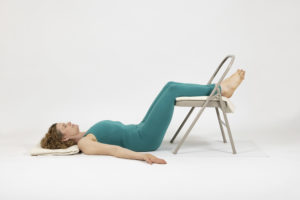
Seven Sisters Dreaming by Gabriella Possum Nungurrayi
by Beth
A contented heart is a calm sea in the midst of all storms. — Anonymous
Santosha, the second niyama of the five niyamas of yoga, is generally translated to mean contentment. K. Taimni, in The Science of Yoga, says it is necessary for yoga practitioners to cultivate contentment because without it, “… there is no possibility of keeping the mind in a condition of equilibrium.”
Contentment can be thought of as a state of acceptance, balance, and being at ease in and through life’s situations and conditions. It means not giving up when daily glitches and life’s messes show up (and they will) and not getting too excited when things go 100% the way we hope (and we always hope they will). Contentment often arises after we’ve faced, traced, and resolved within ourselves much of the hard stuff of life. It’s not easy, and it’s often a struggle to make contentment an inside job, especially when times are tough and we wake up daily to sad, troubling news about the world we live in and the often-tough issues we face in our personal lives, but it is important ongoing work.
Because mental pictures and stories help with understanding big ideas, I created a wheel of life analogy to help make this concept clearer. It’s my shit-sugar wheel. It has five spokes and a hub at the center. It always elicits laughter from students in my workshops. Here’s how it goes.
Imagine your life as a wheel that steadily turns. Half of the rim is coated with sugar and is all that makes you happy, excited, upbeat, and feeling good—the ups. The other half is coated with shit and is all that leaves you feeling, scared, empty, sad, and suffering—the downs. The wheel of your life is constantly turning, and if you stay on the rim, you will go round and round from sugar to shit and back again, over and over and over.
The hub of the wheel is where you can find contentment. The trick is to move your mind—with all of its thoughts, habits, beliefs, emotions, and reactions—from the rim to the hub using the five spokes of the kosha model (see The Koshas: A Yoga Model for Healthy Aging). From the hub you can watch the wheel go round and round but with a bit of healthy detachment. This way, you still see and experience the highs and lows. The highs are still wonderful and the lows are still painful, but from the viewpoint of contentment and self-awareness, you gradually learn to be concerned, but not consumed by them—well most of the time. It’s a process.
Here are a few yoga practices to get you thinking about ways to improve your contentment quotient:
Gesture of the Inner Smile

Gesture of The Inner Smile is called Hansi Mudra in the yoga tradition. Mudras can be thought of as a global positioning system (GPS) for realizing a desired state. The common English meaning of the word is “gesture,” or “seal.” Mudras can be used to recognize a quality, attitude, or energetic state that is already present and waiting to be awakened. Gesture of the Inner Smile is thought to awaken the state of contentment. Here are the instructions from Joseph and Lilian Le Page’s Mudras for Healing and Transformation:
- Touch the tips of your index, middle, and ring fingers to your thumbs.
- Extend your pinky finger straight out.
- Rest the backs of your hands on your thighs or knees, or raise your hands out to the sides of your body with your pinky fingers pointing upwards.
- Relax your shoulders and keep your spine comfortably aligned.
- Breath naturally.
- Hold Gesture of the Inner Smile for two – five minutes or longer if you are comfortable.
Relaxation Breath
Relaxation Breath brings awareness to your breath, slows the number of breaths you take per minute, and lengthens your exhalations, which in turn calms the nervous system. It can be done anytime, anywhere to help you ‘chill’ out. Here are the basic instructions:
- Sit with your spine comfortably aligned.
- Soften your chest and shoulders.
- Close your eyes or keep them open with a downward gaze.
- Inhale normally. Exhale normally.
- Hold your exhalation and silently count, “one thousand one, one thousand two.”
- Repeat, inhaling normally, exhaling normally, and holding your exhalation.
- Continue for 2-3 minutes or longer, if you are comfortable.
Savasana: Relaxation Pose

Savasana is often defined as relaxation with inner awareness of body, breath, and mind. It is optimal for receptivity, learning, and problem solving, and is a way to encourage, embody, and deepen the experience of contentment. My favorite way to practice Savasana is with my legs on a chair as follows:
Props: a sturdy chair, a pillow or folded blanket for your head and another for padding the seat of the chair, a timer, and an optional source of music.
- Set up your props either on a carpeted area or on a yoga mat.
- Set your timer for 10 – 15 minutes and start the music if you choose to use it.
- Sit down close to the chair, swing your legs up, and place your calves on the chair seat with the back of your knees at the edge of the chair and your feet going through the back of the chair if necessary. I like to practice with my hips directly below my knees so my legs form a 90-degree angle. However, if this isn’t comfortable, move your hips further from the chair so your legs are at a more gradual angle, as shown in the photo above.
- Place the pillow or folded blanket under your head.
- Close your eyes and breathe normally as you focus on the music or on your breath.
- When the timer goes off, bend your knees in toward your chest, roll to one side, and use your arms to help you up to a seated position.
Variation: If getting up and down on the floor is difficult, try this in bed with your legs on a stack of pillows.
You can find more excellent information and tips on how to practice Savasana, see Savasana: The Big Picture.
Beth’s self-awareness newsletter is published six times a year. It features informative, inspiring and entertaining tips for finding clarity, contentment, and resilience in a complicated world. For more information and to sign up for the newsletter go to www.bethgibbs.com.
• Follow Yoga for Healthy Aging on Facebook and follow Nina on Instagram • Order Yoga for Times of Change here and purchase the companion videos here • Order Yoga for Healthy Aging: A Guide to Lifelong Well-Being here.


Some great thoughts in this one! I love the wheel analogy and also really like the view of mudras as “used to recognize a quality, attitude, or energetic state that is already present and waiting to be awakened.”